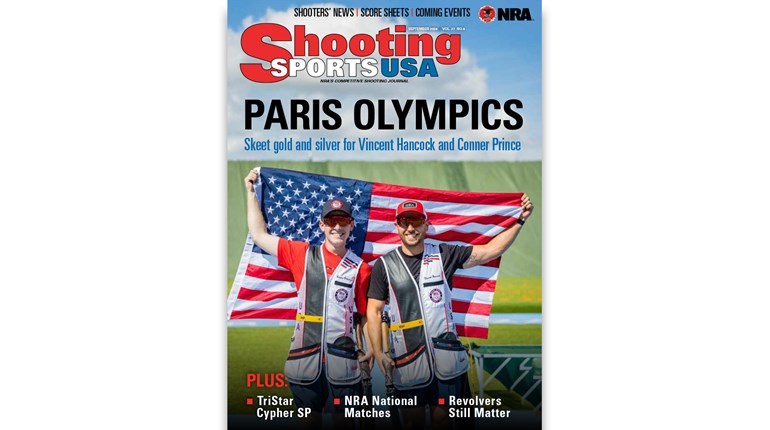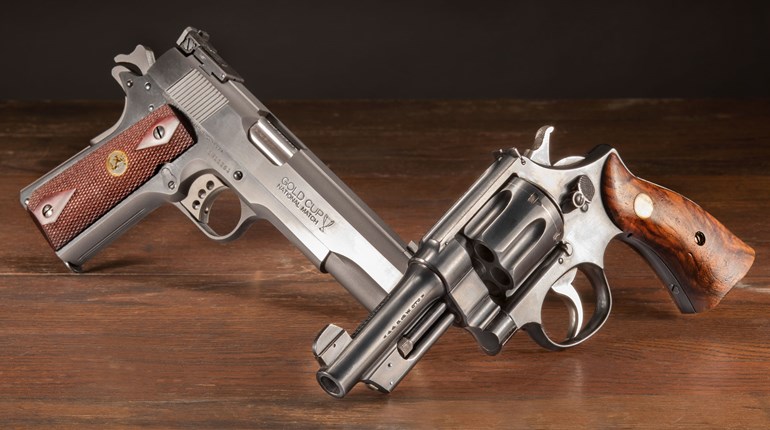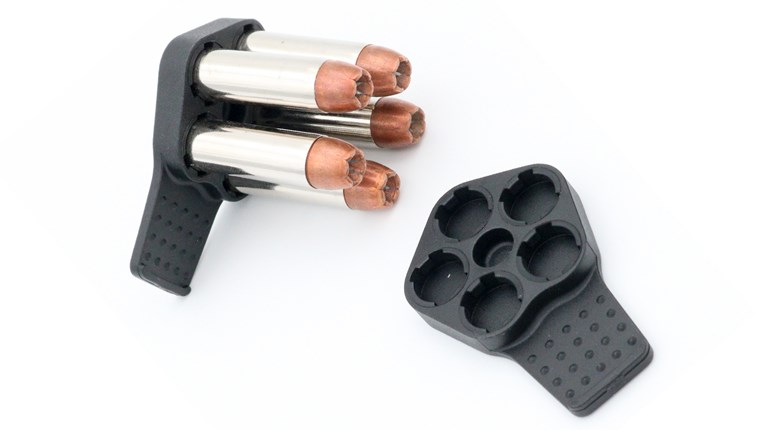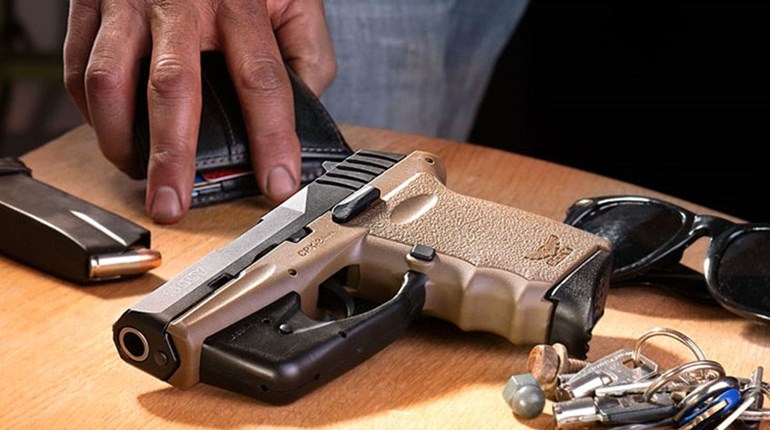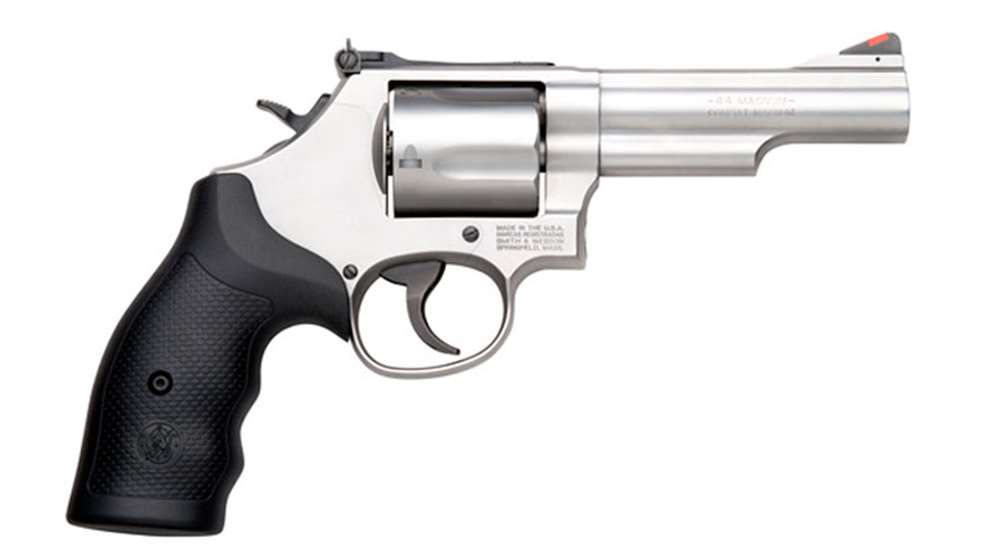
It's been said in order to take two steps forward, sometimes you must begin with a step back. I don't know who originated that piece of wisdom, but I'm delighted Smith & Wesson has taken heed and is once again chambering the .357 Mag. in a K-frame revolver and, for the first time, is offering its L-frame revolver chambered in .44 Mag.
Some time ago, the company discontinued its Models 19 and 66, stating the K-frame was too small to handle sustained firing of .357 Mag. loads. Having introduced the larger L-frame chambered in .357 Mag. several years before, it was quite simple to utilize the bigger frame for all future production of this caliber. Since both the K- and L-frame revolvers had the same grip size, it was expected the change would have minimal impact on dedicated wheelgunners around the world.
During that same time period, shooters suggested Smith & Wesson chamber the L-frame revolver in .44 Mag. Company rationale was that—like the K-frame problems with full house .357 loads—the L-frame was too small to withstand sustained firing of .44 Mag. loads. The company had some empirical data to support these concerns. A few decades back, when police agencies and civilians began qualifying/practicing with .357 Mag. loads instead of the milder .38 Spl., the K-frame revolvers started working loose. Likewise, when handgun silhouette shooters began firing 40 to 80 rounds of .44 Mag. loads every weekend at matches instead of occasional.44 Spl. ammo, larger N-frames required some minor design changes. If the magnum loads had this effect on the N-frames, what could be expected from the smaller, lighter L-frame revolvers?
The most obvious physical change the new K- and L-frame variants have is the Model 69's .44 Mag. cylinder holds 5 rounds instead of the half-dozen found in traditional Smith & Wesson N-frames. Sound familiar? This is the same approach Smith & Wesson adopted when it made the tiny J-frame guns chambered in .38 Spl. and .357 Mag., and more recently when the "supersized" .460 and .500 S&W Mag. cartridges were introduced in its new behemoth X-frame line. If you can't wrap your mind around the concept of a five-shot .44 Mag., think of the Model 69 as a giant J-frame or a downsized X-frame. The second design change to resolve the battering problem was quite simple, and it's been around since the company started building N-frame revolvers more than a century ago. Both the Models 66 and 69 incorporate a ball-detent in the front of the crane, securing the swing-out cylinder to the barrel/extractor-rod housing approximately a half-inch in front of the cylinder face, rather than at the end of the extractor rod. This represents a much more solid lockup since any flexing of the slender extractor rod is rendered irrelevant.
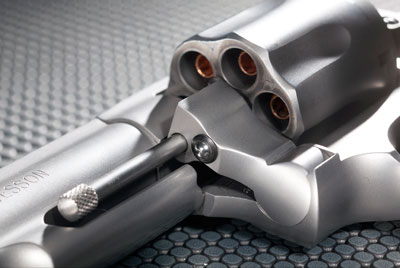
The only other difference that caught my eye was the grips. Both models have rubber grips that fill in below the trigger guard and extend below and in back of the steel grip frame. They have gently contoured finger grooves on the frontstrap. The grips are long enough to provide ample purchase for both hands, and narrow enough to be comfortable—even for shooters having relatively small hands.
Another big change I didn't notice immediately was the two-piece barrel. The inner barrel is a rifled tube, while the outer barrel (or shroud that encloses the rifled tube) is a single unit machined with an integral ejection-rod housing, topstrap and front sight base. The inner barrel extends through the shroud with the threaded end screwed into the frame. The shroud is keyed into the frame so it can't rotate and maintains a fixed orientation. There is a shoulder inside the shroud, and as the inner barrel is screwed into the frame, it tightens the shroud against the frame. Since only the inner, threaded barrel is rotated into the frame and the shroud is keyed into a fixed orientation, there is no "clocking" of the entire barrel assembly, which could rotate the front sight out of position. The end result is a more rigid, fixed structure. The topstrap has serrations that blend in nicely with the serrations on top of the frame and rear sight-mounting tang. Serrations reduce glare which can be very useful on a working gun, particularly one that may be utilized outdoors. The bottom edge of the ejection-rod housing has been cut to receive the steel ball mounted in the yoke that provides the new/old ball-detent lockup mechanism.
Both revolvers are stainless steel with a glass-bead finish, which some folks consider an excellent choice on a handgun that will likely see serious use with heavy loads. Front and rear sights are classic Smith & Wesson: adjustable rear with white outline and an orange plastic insert in the ramped fixed front blade. Barrel lengths are identical at 4.25 inches and provide a well-balanced feel, even better than the old standard 4-inch-barreled revolvers. Unfortunately, the extra .25 inch makes it likely you'll be shopping for a new holster. Triggers are narrow with a smooth surface as you would expect on any handgun with the word "Combat" in its name. Hammers are narrow, with deep checkering on the top surface of the spur to facilitate single-action shooting when desired. The trigger, hammer, cylinder-release latch and the two visible screws in the sideplate all have a matte-black finish that contrasts nicely with the overall silver appearance. The two wheelguns weigh 37.2 ounces (Model 69) and 36.6 ounces (Model 66) when empty. Even loaded, there's not much to tell them apart, since the weight of the sixth round of .357 Mag. ammo offsets most of the weight advantage of individual .44 Mag. rounds. But when you drop the hammer on a full-house .44 Mag., you'll know instantly.
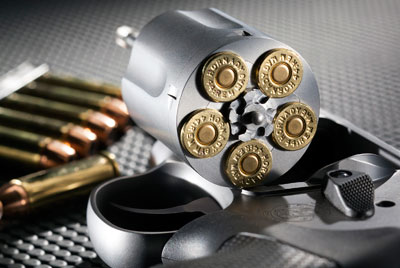
Shooting the Model 66 was pure pleasure, not only because of the comfort factor, but because of the results. With the exception of the extremely lightweight bullet, results on target were excellent. Admittedly, two of the .357 Mag. loads tested did not produce true magnum velocities, but the heavier weight 158-grain bullets produced good groups over a wide range of velocities, and the 140-grain Cor-Bons were outstanding. With the wisdom of hindsight, it would have been smart to test some 125-grain rounds in both .357 Mag. and .38 Spl. since many consider this weight to be the "baseline" self-defense bullet in both calibers. And while most ammo manufacturers have focused their development efforts on improving the performance of this bullet weight, I would still choose one of the heavier bullets, probably 158-grain JHP or SP, for general-purpose carry. Not all threats walk on two legs and have a highly developed nervous system. And even when dealing with bipeds, you might need to penetrate something heavier and more bullet-resistant than a windbreaker in order to bring a halt to bad behavior.
With the .44 Mag. Model 69, the upper power levels and heavier bullets will test your limits and capabilities much more than any .357 Mag. load in the Model 66. At the range, I forgot a lesson learned years ago in handgun silhouette shooting about tightly wrapping the base of my shooting hand thumb with adhesive tape before firing a large number of full-power .44 Mag. loads. After finishing with the Winchester 240-grain ammo (which produced outstanding groups), I simply took the velocity measurements of the other .44 Mag. ammunition I had with me and focused on the data I collected on the .44 Spl. ammo.
For general purpose use, I'd have no concerns carrying a Model 69 stuffed with 5 rounds of the Federal 200-grain .44 Spl. That said, if I were in a more rural environment, I'd have no problem carrying the same handgun loaded with Winchester's 240-grain magnum loads. The magnum's added power is still manageable through 2 or 3 full cylinders and, given hits, I would expect it to prove decisive with fewer rounds fired.
During the course of accuracy testing at the range, I experienced both overcast and sunny skies. The orange inserts in the front sight blades provided a clearer sight picture under cloudy skies, whereas they tended to wash out a bit under the bright sun. Back when shooting silhouettes under sunny Colorado skies, I used to blacken my sights in bright sunlight. When hunting big game with my Smith & Wessons in less-desirable weather, I appreciated the orange inserts. Given the Combat Master's stated mission of self-defense and the potential for low-light encounters, I consider the orange insert an asset.
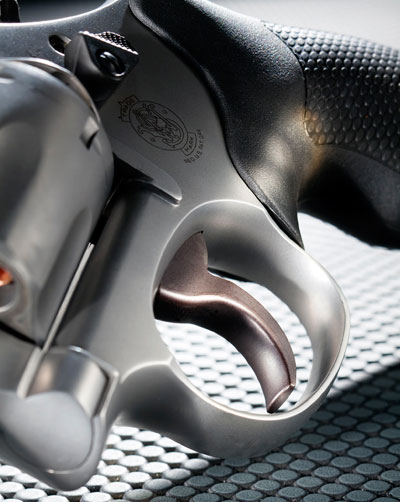
I'll admit to being surprised when I saw the two Combat Masters for the first time at SHOT Show. When companies discontinue a product because "normal" use is excessively hard on them, it's highly unlikely that product will be reintroduced. And in this tactical age with emphasis on high capacity semi-auto handguns, who would have thought a major manufacturer would introduce two new service-type revolvers that are reduced in both size and capacity? The trend over the last several years in "tactical/defensive" revolvers has been to increase stored ammo capacity. Yes, the X-frame Smiths were introduced semi-recently as five-shot revolvers, but the only pistoleros who might consider these big bores as proper defensive handguns are Alaskans who share the countryside (and sometime town streets) with big bears and bigger moose. We urban folk are into pocket revolvers, but these definitely do not qualify as such. They are relatively easy to control with selected loads and not terribly difficult to manage with more-powerful ammo. Don't think shooting the Model 69 will be like shooting Smith's scandium-frame Model 329 .44 Mag. The Model 69's extra 12 ounces make all the difference in the world.
The number of new gun owners continues to grow, and many of the new shooters favor revolvers for various reasons. I don't know whether the resurgence of interest in revolvers is caused by the new shooters, or by experienced shooters who are recognizing some of the advantages offered by revolvers. Either way, I expect most of them, like me, will use more "special" loads than "magnums." I applaud Smith & Wesson for offering these two new wheelguns to the public. I think the company has read the tea leaves correctly, and will sell a lot of these two models.
Specifications
Manufacturer: Smith & Wesson; (800) 331-0852
Model 66Action Type: Double-action revolver
Caliber: .357 Mag.
Capacity: 6 rounds
Frame Material: Stainless steel
Grips: Rubber
Barrel Length: 4.25 inches
Rifling: 5 grooves; 1:18.75-inch RH twist
Sights: Ramp front with orange insert; adjustable rear
Trigger Pull Weight: 11 pounds, 8.5 ounces
Length: 9.69 inches
Width: 1.45 inches
Height: 5.69 inches
Weight: 36.6 ounces
Accessories: Internal lock keys (2), hard case
MSRP: $849
Model 69Action Type: Double-action revolver
Caliber: .44 Mag.
Capacity: 5 rounds
Frame Material: Stainless steel
Grips: Rubber
Barrel Length: 4.25 inches
Rifling: 5 grooves; 1:20-inch RH twist
Sights: Ramp front with orange insert; adjustable rear
Trigger Pull Weight: 10 pounds, 15 ounces
Length: 9.75 inches
Width: 1.56 inches
Height: 6.13 inches
Weight: 37.2 ounces
Accessories: Internal lock keys (2), hard case
MSRP: $849
Shooting Results
| Load | Velocity | Group Size | |||
| Smallest | Largest | Average | |||
| Model 66 | |||||
| .38 Spl. | Black Hills 158-grain Lead | 781 | 1.6 | 3.1 | 2.5 |
| .38 Spl. +P | Blazer 158-grain JHP | 925 | 2.1 | 3.9 | 3.0 |
| .357 Mag. | Pow'R Ball 110-grain | 1,708 | 4.5 | 6.8 | 5.4 |
| Cor-Bon 140-grain JHP | 1,384 | 1.7 | 2.1 | 2.0 | |
| Fusion 158-grain JHP | 1,210 | 1.8 | 3.1 | 2.6 | |
| Model 69 | |||||
| .44 Spl. | Cor-Bon 165-grain JHP | 1,175 | 3.2 | 3.8 | 3.4 |
| Blazer 200-grain JHP | 790 | 2.7 | 3.9 | 3.2 | |
| Federal 200-grain SWCHP | 854 | 2.2 | 3.2 | 2.6 | |
| Speer 200-grain GDHP | 785 | 2.7 | 3.9 | 3.2 | |
| Winchester 200-grain Silvertip | 691 | 2.6 | 3.7 | 3.1 | |
| .44 Mag. | Winchester 240-grain JHP | 1,046 | 1.3 | 2.5 | 1.8 |
Velocity measured in fps at the muzzle for 10 consecutive shots with a Shooting Chrony chronograph. Temperature: 63 degrees Fahrenheit. Accuracy measured in inches for five consecutive, five-shot groups at 25 yards.












